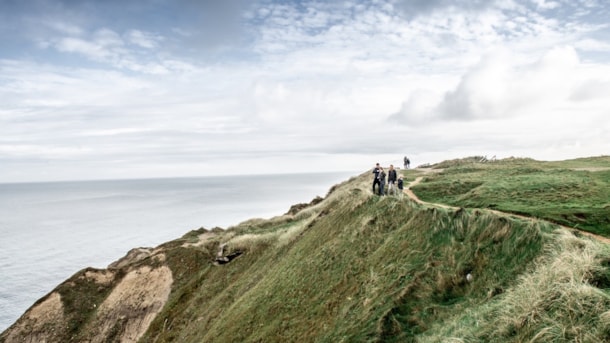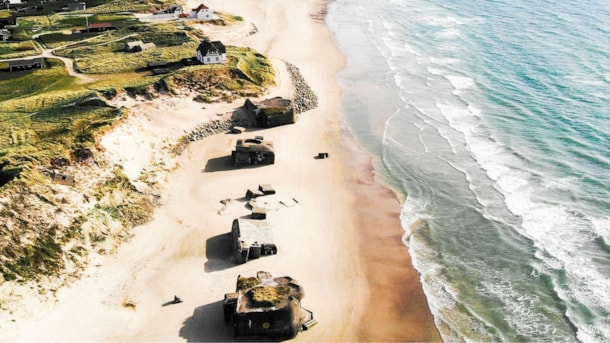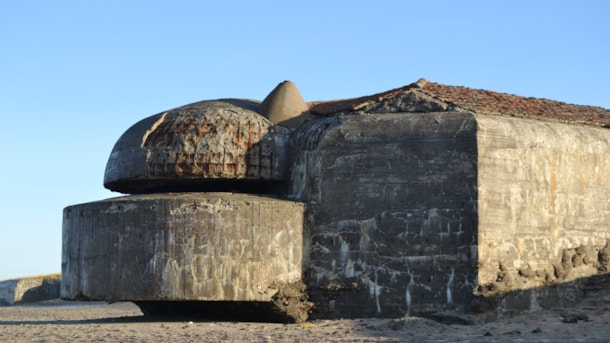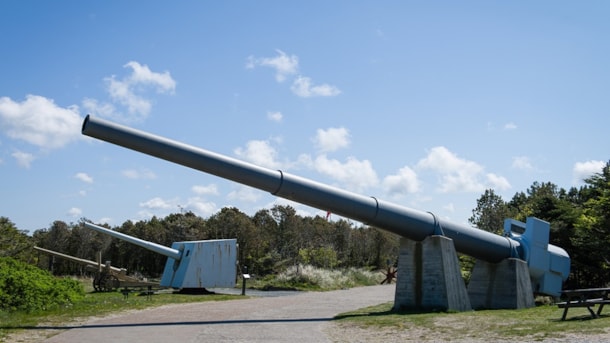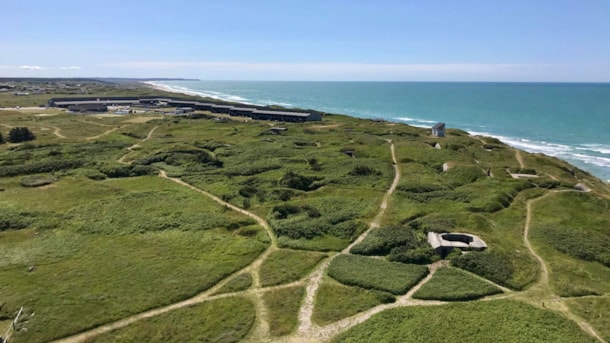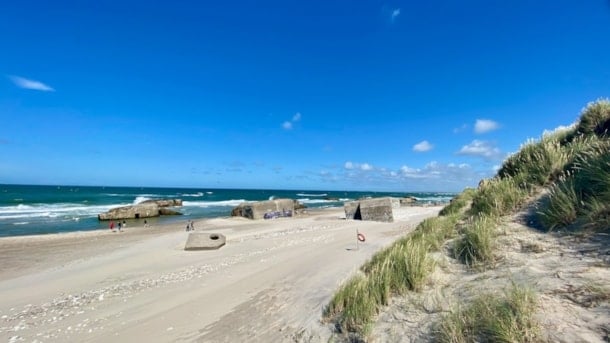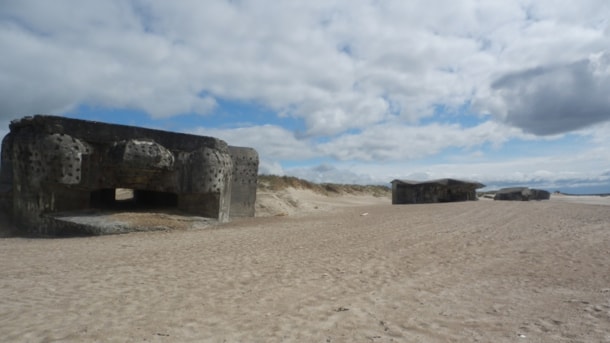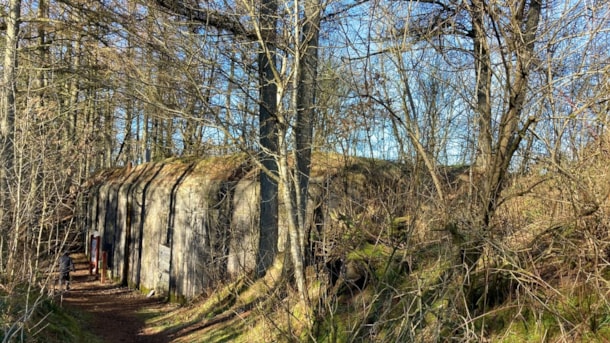Bunkers at the Northwest Coast
Along the entire west coast there are bunkers, that are a distinct sign of wartime.
The German concrete bunkers have over time emerged from the sand, where they were well hidden during the war and used as an impenetrable fortification along the sea. The east front required enormous human resources and it was necessary for Hitler to fortify the west-facing coasts as best as he could. In the German propaganda the fortification was wrongly described as an impenetrable wall of concrete, brimming with artillery and manned with loyal elite troops. In reality, most of them consisted of a series of fortified bases and the elite troops were soldiers, who were either recovering after an injury in battle or were too young or too old to fight at the front.
Photo:Destination Nordvestkysten
Bunkermuseer & vartegn
The Bunkermuseum Hanstholm is the largest fortification from World War II in Northern Europe. Experience the incomparable museum bunker of 2500m², where you can see how the soldiers lived. On top of the bunker is a documentation center, which is an interactive exhibition about the life in Denmark's strongest fortress during World War II. The history is told of both the German soldiers and the civil population and their life in the shadow of the fortifications. You can move around the historical terrain with the museum train on the original narrow-gauge railway, which was built by the Germans to transport heavy ammunition to the cannon.
The open-air museum Hanstholm is a part of the bunker museum, here you can go exploring the beautiful surroundings to find all the 19 bunkers in the hilly landscape. They are pretty much all open, so it is possible to go inside and see exactly where the German soldiers were located and watched over a part of Skagerak from inland.
Photo:Destination Nordvestkysten
Bunkermuseum Hirtshals 10th Battery
The Bunkermuseum in Hirtshals is located within the beautiful nature and with a view of the town's landmark, Hirtshals lighthouse. Here you have the possibility to get close to history and see how the German soldiers lived during World War II. There were light poles set up, which the Germans used to see enemies better in the dark. The bunker complex is the place in Denmark with the most excavated bunkers. 54 out of 70 bunkers are excavated as well as a huge amount of cannon, mortar and machine gun positions. The site is accessible all year round but in summer it is possible to join an interesting guided tour.
Read more about bunkers and bunker museums
Bunker Museum at Bulbjerg
Visit the exhibition bunker at Bulbjerg, which served as an observation bunker during World War II.
The bunker is designed as a free small museum and is open during the day. Here you can read about B...
The bunkers in Løkken and surroundings
During the occupation, Løkken was acting as a German support group consisting of infantry positions and a coastal battery. On the outskirts of the town and in the plantation in the middle of the town,...
Thyborøn Fortress / Atlantvolden
The bunkers that make up the Atlantvolden were built on orders from Hitler during World War II.
All in all, the Atlantvolden consists of 8,000 different concrete structures, of which almost 2,000 are...
Bunker Museum Hanstholm - Denmark's largest bunker museum
Visit Bunker Museum Hanstholm and discover Northern Europe's largest WWII battery complex.
The Bunker Museum Hirtshals 10th Battery
Dive into the story and see how German soldiers lived during World War II.
Explore the 69 bunkers associated with the 3.5 km trench. Join a guided tour during the summer.
Bunkertur med guide til Thyborønfæstningen
Deltag i en unik fortælling og rundvisning i Thyborønfæstningen, som er en del af Atlantvolden, der blev bygget på den jyske vestkyst under anden verdenskrig.
The hospital bunker in Klosterheden
The hospital bunker from World War II in Klosterheden near Rom Airfield was the airfield's largest concrete bunker.



